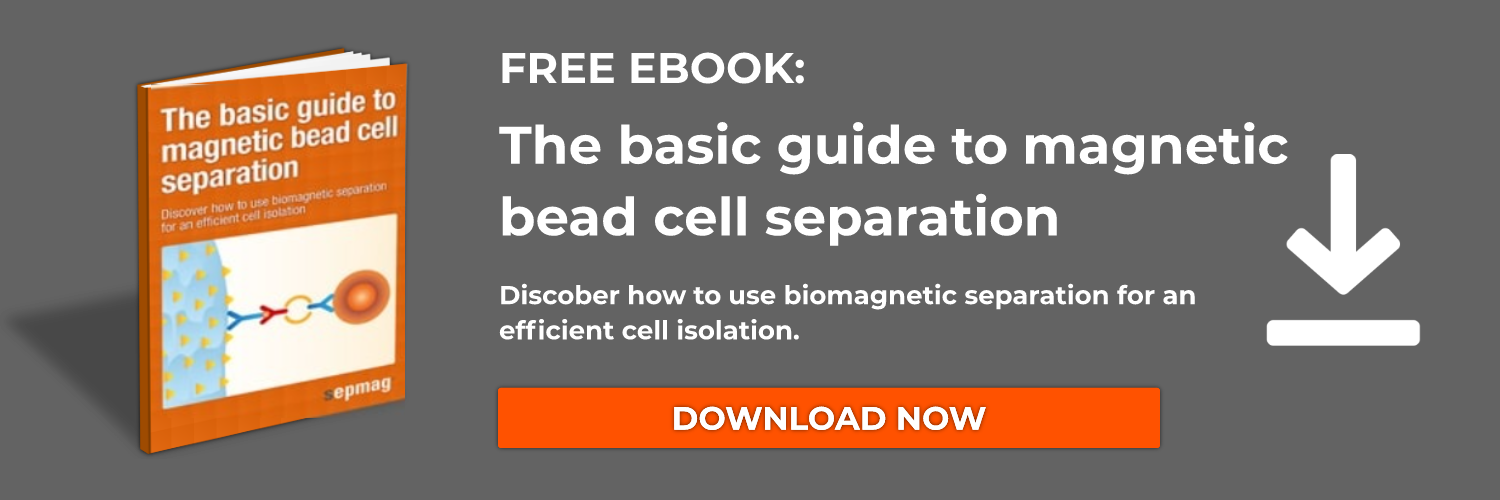Magnetic nanoparticles have risen in popularity in medical and biotechnology fields over the past decade. The ideal magnetic properties of nanoparticles for biomedical applications are that they exhibit a form of magnetism called superparamagnetism, where they can be magnetized by an externally applied magnetic field and quickly returned to a non-magnetic state once the field is removed. This feature also prevents magnetic nanoparticles from exhibiting an active behavior when there is no applied field.
Such magnetic nanoparticles can also easily disperse in aqueous solution and remain stable when coated with different materials to form what’s known as a ferrofluid. These magnetic properties of nanoparticles make them particularly useful for all kinds of in vitro, in vivo, and analytical applications. Though there are many options to consider when choosing a magnetic nanoparticle for an experiment or therapeutic goal, a general understanding of the synthesis of magnetic nanoparticles, protection, functionalization, and application is a good place to start.
Synthesis of magnetic nanoparticlesIn order to ensure that the magnetic nanoparticles remain consistent in application, synthesis of magnetic nanoparticles must maintain uniformity in size, shape, and composition. Magnetic nanoparticles can be made from a variety of materials: iron oxide magnetite (Fe3O4), maghemite (Fe2O3), pure metals like Fe and Co, alloys such as CoPt3 and FePt, and others including MnFe2O4, MgFe2O4, and CoFe2O4. There are many different synthesis methods to create superparamagnetic nanoparticles, though the most common include co-precipitation, thermal decomposition, microemulsion, and hydrothermal synthesis. Each method may vary in necessary reagents, reaction conditions, synthesis of magnetic nanoparticles, control over particle size distribution, and solvency of the final product. The good news is that with so many different synthesis methods available it is easier than ever to purchase the appropriate magnetic nanoparticles for a particular application.
Functionalization of Magnetic Nanoparticles
Most superparamagnetic nanoparticles are normally stabilized by surfactants (e.g. oleic acid and/or oleylamine) which are hydrophobic. For use in biological applications, these surfaces are often functionalized via surfactant addition or surfactant exchange., rendering the magnetic nanoparticles water-soluble. Similarly, various amphiphilic polymers have been used to successfully transfer hydrophobic nanoparticles from organic solvents into an aqueous solution. Various amphiphilic polymers can be used to functionalize magnetic nanoparticles including carboxylic acid, thiol, amine, carbonyl, and biotin. Such functionalization is necessary to immobilize various biological moieties like oligonucleotides, peptides, and proteins.
Applications of Magnetic Nanoparticle
The magnetic properties of nanoparticles make them increasingly useful for a wide array of applications, most notably for use in biomedicine. Their superparamagnetic behavior allows for the transfer of magnetic energy to the nanoparticles in the form of heat. This property can be harnessed in vivo to increase the temperature of pathological cells, thereby destroying them by a process known as hyperthermia. Functionalization of magnetic nanoparticles with bioactive molecules has increased their potential for use in drug delivery systems and nuclear magnetic resonance (NMR) imaging. Furthermore, the magnetic properties of nanoparticles make them particularly useful in diagnostic applications like solid phase extraction for the detection of trace level contaminants, and in magnetorelaxometry for the evaluation of immunoassays.
Magnetic nanoparticles also offer promising opportunities in fluorescence imaging applications. Alternatively, some magnetic nanoparticles proved huge flexibility for in situ applications, and have been used as a versatile tool for the remediation of certain contaminants in groundwater, soil, and even air. Even more recently, some magnetic nanoparticles have been researched for use in the removal of organic and inorganic pollutants. All things considered, the synthesis of magnetic nanoparticles, protection, functionalization, and application present an exciting, ever-expanding field of technologies.
Related news
- Immunomagnetic separation protocol
- Janus particles synthesis self assembly physical properties and applications
- Biphasic janus particles with nanoscale anisotropy
Published on February 01, 2017 and updated on January 25, 2024.




